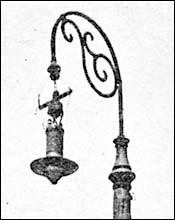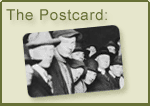|
|||||||||||||||
|
The Story
Resources
Background
|
By Chris Julin and Stephanie Hemphill
June 2001
SINCE THE GRAVEYARD CEREMONY, interest in the Duluth lynchings has grown - enough that the Minnesota Historical Society published a new edition of Michael Fedo's book last year. Back when the first edition of the book came out, the historical society didn't even write a review.
 View the street on the day after the lynching and the way the same location looks today.
View the street on the day after the lynching and the way the same location looks today. |
"In 1979, many people who had some connection to this were still alive, and I think it was the kind of thing - people just simply not wanting to hear about it. In 1979 if we had done this, I would have been here with a couple members of my family," says Fedo.
Upstairs at the reference desk, the librarians say something similar. These days, more and more people want to know about the lynching. Head reference librarian David Ouse spins through a roll of microfilm.
"This is the Duluth News Tribune from June 16, 1920. 'Duluth Mob Hangs Negroes. Three Dragged From Jail.' Big headline."
The film is scratched from use, and its cardboard box is falling apart from being handled.
"Ten or 15 years ago, there was the book, and occasionally I think students would do papers on it. But there's a lot more community interest now. We have some old newspaper clippings that, in the last few years, have gotten some pretty heavy use. And of course, a lot more copies of the book, new editions of the book," says Ouse.
Sometimes all 10 copies of the new edition are checked out, but Duluth Mayor Gary Doty recently found a copy on the shelf. Doty sat alone at a library table with the book and a stack of note cards. The mayor was reading up because he's agreed to help build a memorial to the lynching victims.
As mayor, Doty has spent a lot of city money cleaning up and redeveloping the city's downtown. He prides himself on bringing tourists and new businesses to Duluth. But when a citizens group proposed building a lynching memorial, he said 'No.' He thought it would be bad for Duluth's image. But then the mayor changed his mind.
"It's a terrible event, and one that I have mixed feelings about. It's one that I'd like to forget about in the respect that it happened in Duluth. But it's certainly something that we can't forget about because I think that something has to be done."
Next: It's Not Just History

